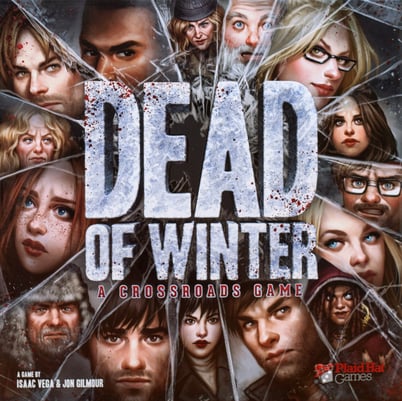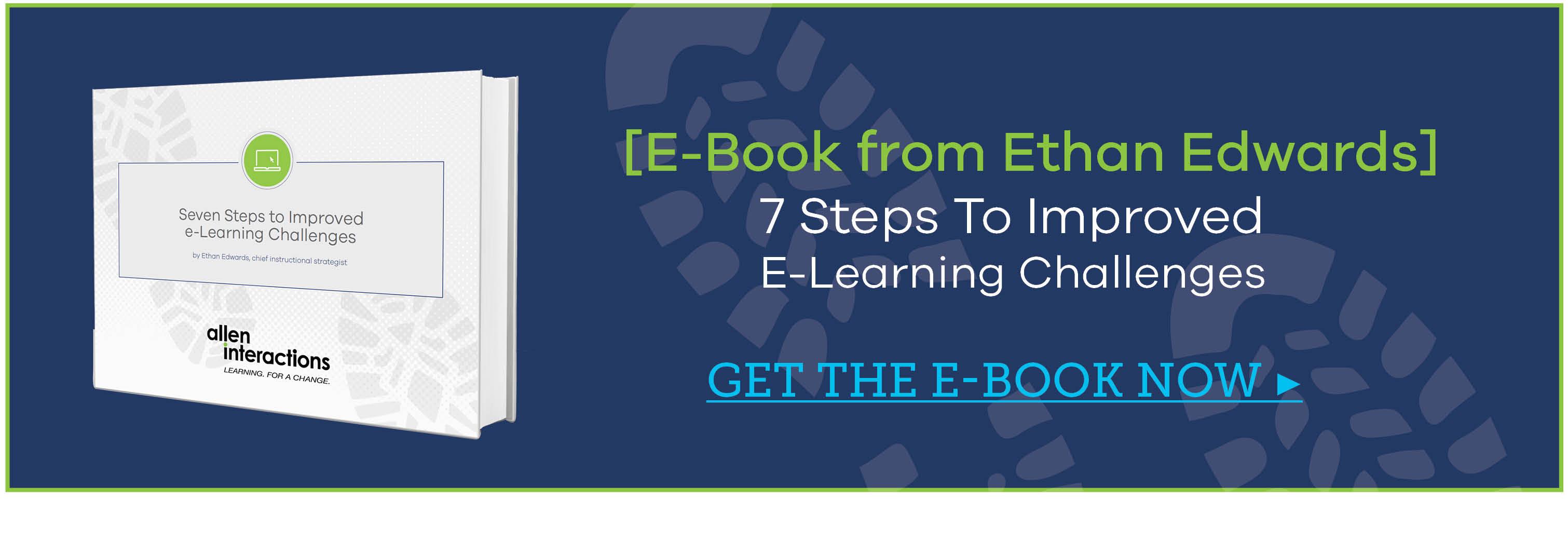Blog
Don’t be That Guy: What Instructional Designers Can Learn from Internet ...
By Mary-Scott Hunter, Studio Executive Edmond said, “Where will the food come from? We don’t have enough to feed the whole community.”In a weary ...


Designing Thoughtful Learning Requires BRRRRAAAAAAAAIIIIIIINS
By Mary-Scott Hunter | August 11, 2015 | Custom Learning | 0 Comments
By Mary-Scott Hunter, Studio Executive

Edmond said, “Where will the food come from? We don’t have enough to feed the whole community.”In a weary voice, Brita said, “The grocery store. We have to go shopping.”
Edmond said, “But it’s full of zombies.”
“I know. We have to risk it. We don’t have a choice or people will die.”
Under his breath, Edmond said, “Maybe we should let people die.”
It’s fun to watch your friends stress and suffer through a board game meant for a relaxing Saturday evening. I swear, I have never seen two people take a zombie board game more seriously than these two, both of whom had never played before.
I enjoyed watching their suffering (in a friendly way) because I kept comparing them to learners and making connections about game play, instructional design, and observing just how much learners can ‘handle’ before they snap. I probably shouldn’t enjoy using my friends as guinea pigs, but over six hours of glued-to-our-seats gaming, I couldn’t help but make a few observations, including: next time, bring a few extra bottles of wine and never trust Edmond in a snow storm during the Zombie Apocalypse.
Oh, and I made a few observations about how people learn.
Multi-dimensional Goals Excite Learners
Dead of Winter invites players to dwell in a Zombie Apocalypse (during winter, of course) hunting down food, guns, gasoline, and other necessities to survive. While cooperating toward these goals, players also receive a card explaining their own personal agenda: what the players must achieve in order to ‘win’ above and beyond the game’s shared goals.
Some personal goals conflict with group goals. For example, some players want to hoard food tokens and acquire four gas tokens. Or by game’s end, another player wants to make sure that he’s the only living person at the police station.

In addition, every time a game player left the survivor compound to search for necessities, he or she would roll an “exposure” die, which could mean frostbite, lost gasoline, and freezing death. Every trip to accomplish group goals could mean disaster.
Brita and Edmond listened to my explanation of rules and asked questions. They frequently said, “Yeah, but if you do X, it could result in a character death.”
I would say, “Yes. But the community needs guns to fight zombies.”
They rallied behind the goals and the complexity of the rules, and genuinely loved the strange stress of trying to keep the imaginary community alive. I was pleasantly surprised as I listened to Brita and Edmond scheme the complex initiatives they each needed to take for the sake of community.
“You’ll have to get a three or higher to search for food.”
“Agreed. If I find food, you should go to the police station and get guns. We’re low. If not, and you roll a four, go to the gas station.”
“Of course.”
They enjoyed plotting and planning.
I do believe that if the rules were simpler, they would have allowed me—the only person familiar with this game—to bear the burden of ‘authority’—the person with the answers. But due to the complexity and impact of their personal decisions, the players were forced to take ownership or die.
We often assume learners cannot bear the full brunt of the complexities in training. I hear clients say, “We’ll give them the basics in the e-learning, and then communicate the complexities in a follow-up webinar.”
This guarantees an e-learning fail because “the basics” mean reading―page after page of reading. When learners show up for the promised webinar completely devoid of any meaningful grasp of the concepts at hand, the facilitators get angry at the useless e-learning and repeat the information.
Don’t give learners less to do–– give them more! Make them work! Encourage the learners to embrace the real-life complexities of the work environment, the personal and department agendas, and the government regulations. Give learners real problems to solve and they will take ownership of their actions. Simplify the task, and your learners will sense that there’s no need to step up and learn.
Multi-dimensional Goals Frustrate New Learners
During Brita and Edmond’s planning session to get more food tokens, I interrupted and cheerfully said, “Yes, this sounds like a great plan. As long as one of us isn’t the Betrayer.”
They glared at me as if I were full of juicy brains and they were the undead.
In the game, one card is shuffled into the “personal agendas” deck––the Betrayer card. The Betrayer secretly works against the group goals, and may influence the group in subtle ways such as failing to contribute his or her share or stranding characters in remote locations. The longer this character can work in secret, the more damage the Betrayer can do.
Brita and Edmond did not like this concept and refused to discuss it.
This revealed an odd truth: The Betrayer card was “the straw that broke the camel’s back.” Brita and Edmond weren’t ready to handle it. Each round of play was layered with at least three complex goals. In addition, the players had to roll the Exposure die, fight zombies, and collect supplies to live. Adding in just one more variable—the Betrayer—was too much.
After a few hours, we took a break so I could get more strawberries from my car.
When I returned, I found Brita and Edmond eyeing me guiltily from the kitchen.
“Neither of us is the Betrayer,” Brita said. “We talked it over and came clean.”
Learners can handle quite a bit of complexity. But sometimes, one level of complexity goes ‘too far’ and threatens to undo the whole experience. This is why we need instructional designers and user testing to validate performance and determine the blend of complexity balanced against the possibility of success.
Learners are different at the end of the experience
After we successfully completed the first game (six hours later), Brita and Edmond riffed on how much fun they had and how thrilling it was to work on private and collaborative goals.
Edmond said, “Can you imagine how much harder this would be if there really was a Betrayer among us?”
Brita said, “If I were the Betrayer, you know what I’d do? I’d wait until the final round, and then not contribute food. Easiest way to sink the entire colony.”
Edmond said, “I’d make sure we lost a Morale card and let the safe zone get overrun by zombies.”
I was surprised how freely they discussed the role of Betrayer after the game was over. Earlier, they angrily denounced the role and refused to even think about it. But now, they thought it ‘sounded fun?’
Who were these friends of mine, gleefully plotting the deaths of our fellow colonists?
They were not the same people who started the game.
And that’s the thing to remember…learners who have successfully mastered a skill are not the same people who began the training. If the training was complex enough to alter thought patterns, the learner is no longer a novice. It might be time to layer in that next level of complexity.
Don’t underestimate N00bs
That Saturday night, playing Winter of the Dead, we won. The colony survived the zombie attacks!
Well, not all of us won, not exactly.
We accomplished the group goals and won the necessary challenges to keep warm and collect food. The colonists mostly lived, even if a few were forced to surrender their brains to the zombie horde.
When it came to our personal goals, I did not accomplish mine.
Brita did. Her job was to hoard gas cards.
Edmond accomplished his goals as well. His card dictated that he was a sadist and was required to hurt two players before the end of the game. “Which I did,” he said proudly.
His grin unnerved me.
My friends reminded me of the most important thing learners often take away from good training: a sense of accomplishment.
Can you design training that allows for individual accomplishment while achieving collective goals? You can, but it takes something special: brains!
LIKE WHAT YOU'VE READ? SHARE THE KNOWLEDGE WITH THIS READY-MADE TWEET!
CLICK TO TWEET: Designing Thoughtful Learning Requires BRRRRAAAAAAAAIIIIIIINS http://hubs.ly/H013fjk0 #aiblog @customelearning

About the Author: Mary-Scott Hunter
Comments
Would you like to leave a comment?
Related Blog Posts

By: Mary-Scott Hunter | Oct, 2016
Category: Custom Learning

Blog
The Power of “Test Then Tell” in e-Learning Design
By Mary-Scott Hunter, Studio Executive Edmond said, “Where will the food come from? We don’t have enough to feed the whole community.”In a weary ...
By: Mary-Scott Hunter | Feb, 2016
Category: Custom Learning

Blog
Je n’en crois pas mes yeux! Unexpected E-Learning Insights in a French ...
By Mary-Scott Hunter, Studio Executive Edmond said, “Where will the food come from? We don’t have enough to feed the whole community.”In a weary ...
By: Mary-Scott Hunter | Apr, 2016
Category: Custom Learning


